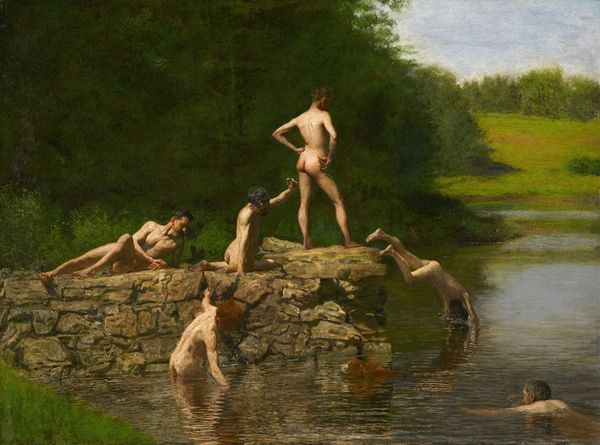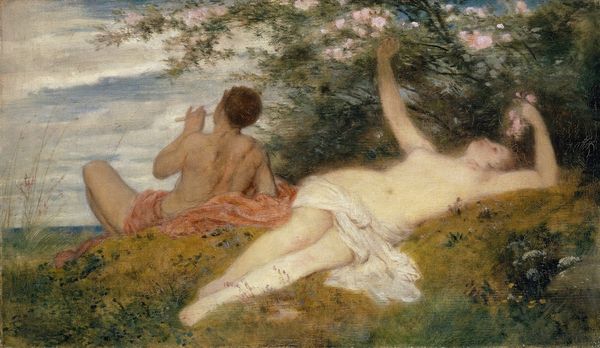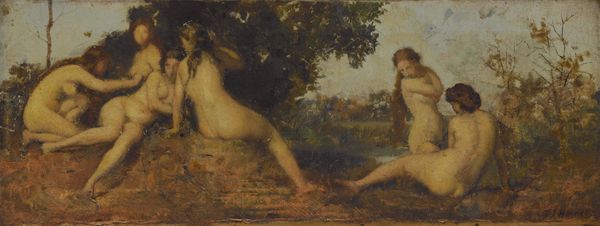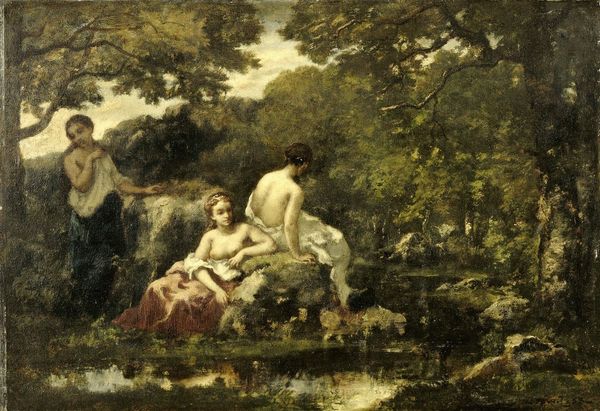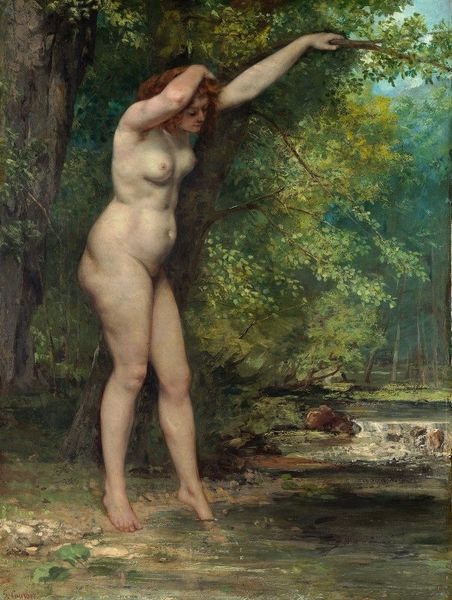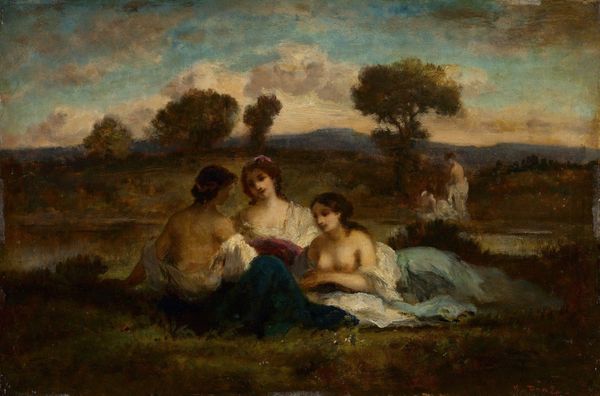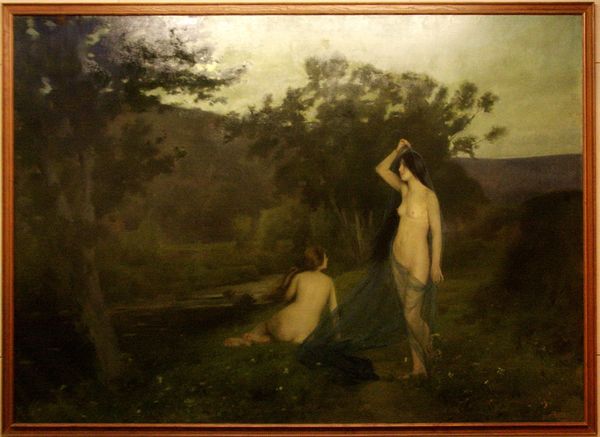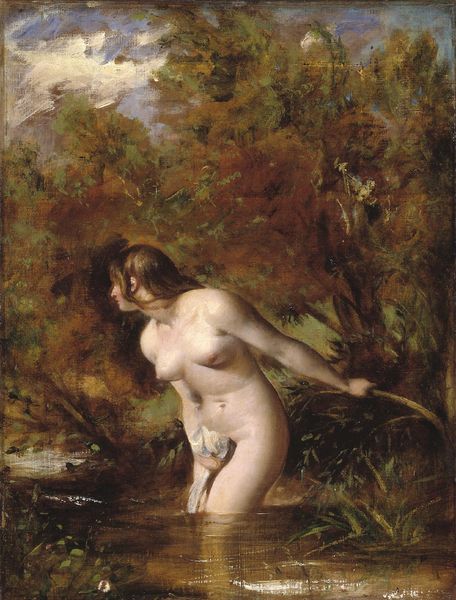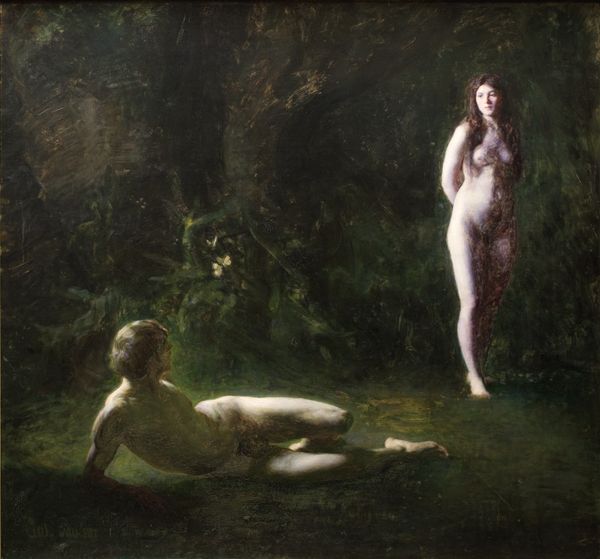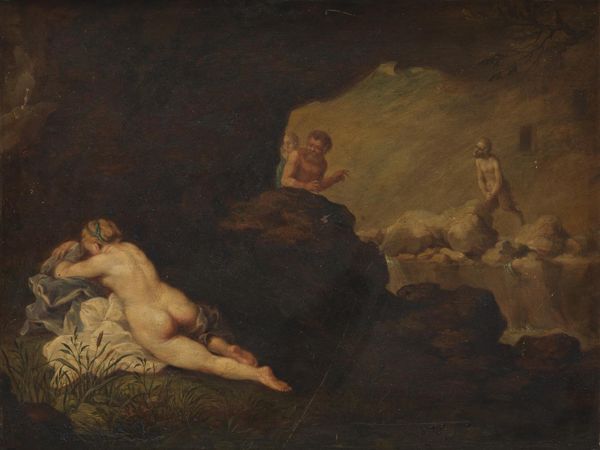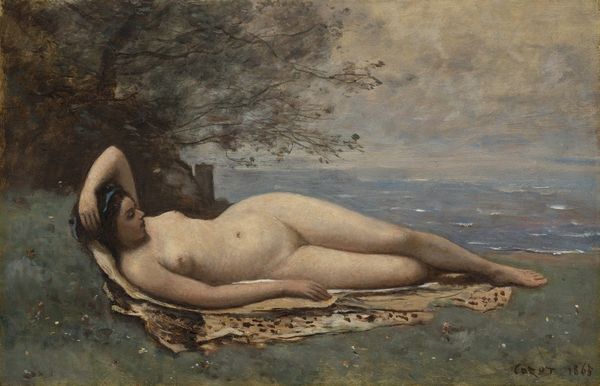
Copyright: Public Domain: Artvee
Editor: Thomas Eakins's "Arcadia," painted around 1883 using oil on canvas, presents a lush, verdant scene. The figures, all nude, seem lost in a timeless pastoral moment. It strikes me as idealized, almost dreamlike. How do you interpret this work? Curator: This work certainly presents an idealized vision, but let’s think about the context. Eakins was painting in a time of rapid industrialization and urbanization in America. What might these nude figures in nature represent in contrast to that backdrop? Could this "Arcadia" be read as a longing for a simpler, pre-industrial past, or perhaps a critique of the burgeoning capitalist society? Editor: I see what you mean. It's easy to get lost in the romanticism and forget about the societal tensions of the time. The figures, though idealized, also appear vulnerable. Curator: Exactly. Consider the power dynamics inherent in the artist's gaze, a male artist depicting nude figures. Are these figures empowered within this "Arcadia," or are they objects of a male gaze, perhaps reflecting anxieties or fantasies circulating at the time? And how might this depiction relate to Eakins’s personal views on art, the body, and society? Editor: That brings up a lot of questions about the role of the artist and the message they are portraying. Curator: It does. The painting is not simply a pretty landscape with figures. It's a complex statement about identity, the human relationship with nature, and the rapidly changing social landscape of late 19th-century America. By analyzing it with this critical lens, we unlock a deeper understanding of the artist, his time, and the narratives embedded within the image. Editor: Thank you, that helps see beyond the surface and appreciate how loaded this image is. Curator: My pleasure. Art is never created in a vacuum. It reflects, and often challenges, the world around it.
Comments
No comments
Be the first to comment and join the conversation on the ultimate creative platform.
